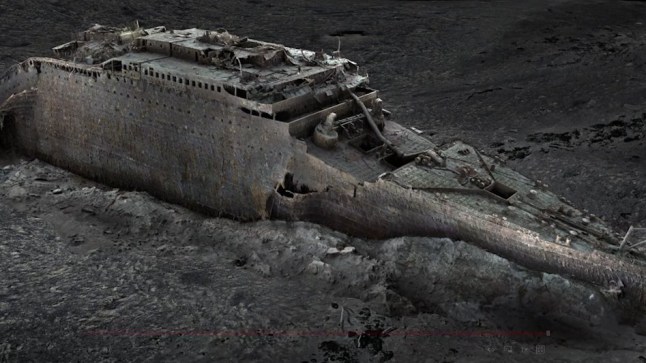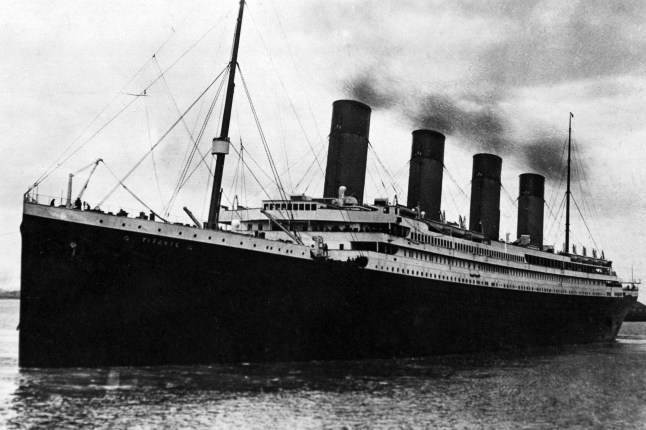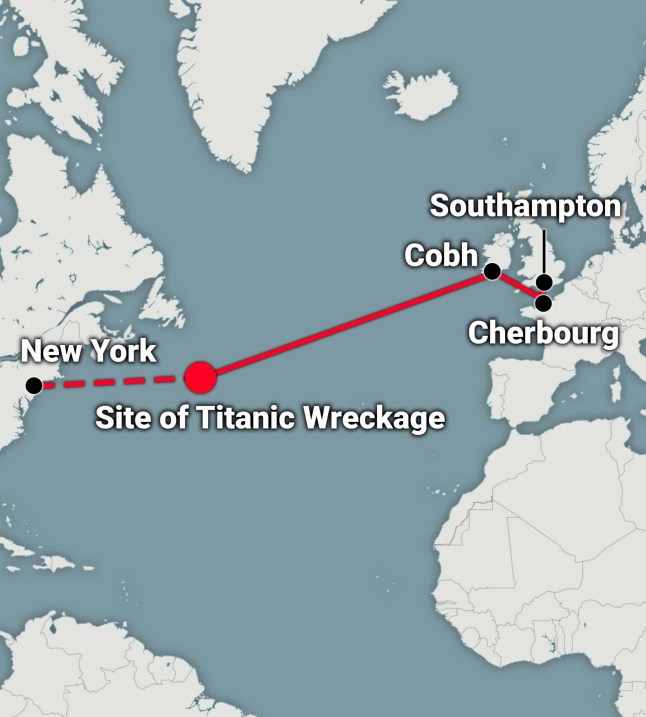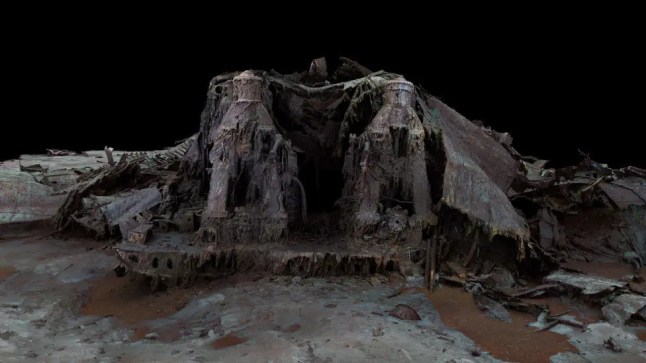
You won’t have to be a billionaire to see the Titanic up close thanks to groundbreaking scans of the wreck lying on the ocean floor.
An exact 3D replica of the ship, projected onto a warehouse wall in London, could reveal the secrets of the ‘unsinkable’ vessel’s final moments after being struck by an iceberg in 1912.
‘Having a comprehensive view of the entirety of the wreck site is key to understanding what happened here’, said Titanic expert Parks Stephenson.
Although he has visited the wreck twice since a 12,500ft dive in 2005, the retired naval officer can see far more detail on the model than he ever did in person in the dark, icy depths of the Atlantic Ocean.
He said: ‘As soon as I saw the Titanic digital twin images, I could tell… I’d never seen Titanic like this before.’
It’s actually been three years since deep-sea mapping company Magellan took 715,000 photos of the ship, and millions of laser measurements, over three weeks.
But the full scale of this project is only being revealed to the public in National Geographic’s behind-the-scenes documentary – Titanic: The Digital Resurrection. It will be broadcast the National Geographic Channel on Monday.

Stephenson considers the Titanic the ‘last surviving eyewitness to the disaster’, in which 1,500 people died in icy waters.
We already know the 882ft-long ship broke in half while it sank – that was confirmed with side scan sonar in 1985 after decade of survivors’ testimony being denied.
Less clear is how the lights stayed on for so long, and why part of the ship is crumpled debris while the other is relatively in tact.
Analysis of the Magellan scans sheds some light on those.
They show a deckside valve from one of Titanic’s huge boiler rooms left open, indicating steam was still flowing into an electricity generator.
Inside the room, the 3D model shows some of the boilers have caved in. This may be because they were still active when they were submerged by water.
The discovery of the Titanic’s wreck
It’s been 40 years since the Titanic was found on September 1, 1985.
Various efforts to salvage the wreck had failed in the previous seven decades, largely because no one knew exactly where it was.
That was until Dr Robert Ballard found it lying on the seabed 12,500ft deep, with its two halves lying 600 metres apart.
He was only able to do this thanks to funding from the US Navy, which wanted him to first find the wrecks of missing submarines USS Thresher and USS Scorpion.
‘They held the chaos at bay as long as possible’, Stephenson told BBC News. ‘They kept the lights and the power working to the end, to give the crew time to launch the lifeboats safely with some light instead of in absolute darkness.’
Despite the technological innovation, the scans are still limited by how the Titanic landed on the ocean floor.
Split in two and partially mangled – Stephenson imagines the rear spiraling and disintegrating as it sank – the very bottom of the ship, where the iceberg tore it open, is hidden beneath sediment.
But the trickle of answers from each bit of research is what keeps people coming back. Stephenson said: ‘Every time she leaves us wanting for more.’
Where did the Titanic sink?

The Titanic set off on its maiden voyage from Southampton in England, popping over the Channel to Cherbourg, France, before sailing to Cobh in Ireland to pick up more passengers.
By the time it was sailing across the Atlantic on April 11, there were 2,240 people on board.
It was destined for New York City in the USA, but it sank just southeast of Newfoundland.
The co-ordinates of its wreck are 41º43’32”N, 49º56’49”W.
How many people died and how many survived?

More than 1,500 people died in the sinking of the Titanic. Just 706 survived.
The survival rate varied widely, with only 25% of third class passengers surviving, compared with 62% of first class passengers.
Women and children, who were ushered onto the lifeboats first, had 75% and 50% survival rates.
Although the Titanic was sailing under capacity – it could hold 1,000 more people than it did – the lifeboats only had room for 1,178.
Even so, they could have saved more if all were deployed and full.
Get in touch with our news team by emailing us at webnews@metro.co.uk.
For more stories like this, check our news page.


